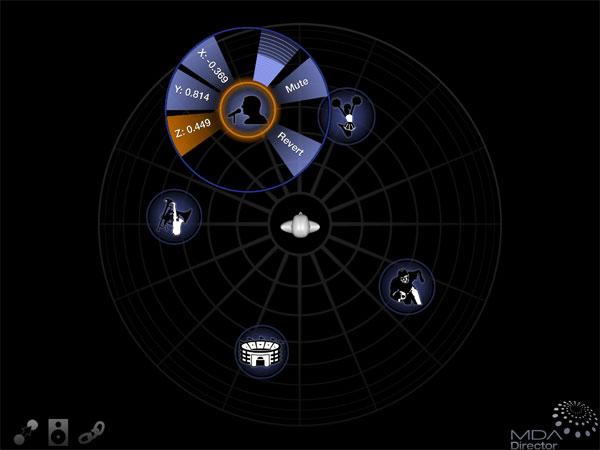3DAA Demos MDA Director

Then there's SRS Labs, which has been working on 3D audio perhaps longer than anyone else. Not only does this company offer a variety of proprietary soundfield-expansion algorithms, it is also the founding member of the 3D Audio Alliance (3DAA), which is working on an open-standard specification called Multi-Dimensional Audio, or MDA.
Rather than creating an audio file with a certain number of channels, MDA encodes each audio object—instruments, vocals, sound effects, etc.—with its position and movement in 3D space. Then, any MDA-compatible sound system renders the audio according to this metadata as best it can with the number of channels it has, placing each audio object where it's supposed to be in the 3D soundfield. (For more on SRS, 3DAA, and MDA, see my write-up here, Rob Sabin's take here, and my interview with Alan Kraemer, SRS CTO and 3DAA president, on the Home Theater Geeks podcast here.)
Last week, the 3DAA demonstrated the latest feature to be incorporated into MDA. Called MDA Director, it lets consumers control the position of audio objects, creating their own, personalized 3D soundfield using an iPad app. In the screen shot above, the various audio elements of a football game are displayed, including the announcer, cheerleaders, band, stadium noise, and a microphone in the helmet of one of the players, all shown in spatial relation to the listener in the center. The announcer is highlighted, and you can see his x, y, and z coordinates in a hemispherical 3D soundfield; you can also change his volume, mute him, or "revert" between English and Spanish. All the other objects have similar controls, and they can be placed anywhere you wish simply by dragging them around on the screen.
According to the 3DAA, this interactivity makes audio a "lean-forward" experience that is ideal for sporting events and concerts—for example, you could put yourself in the audience, on the conductor's podium, or in the middle of the ensemble. Of course, some content creators might be willing to relinquish this much control of their product, while others won't. And for consumers who screw up the soundfield beyond repair, there's always a reset button that restores the default configuration.
This is an interesting idea, but I wonder if many consumers would want interactive audio or if they would prefer to lean back and enjoy a more passive audio experience. To find out, this week's poll question asks if you'd be interested in playing around with the audio mix, and I encourage you to vote so we can all see if something like MDA Director has a market—or not.
- Log in or register to post comments




































































